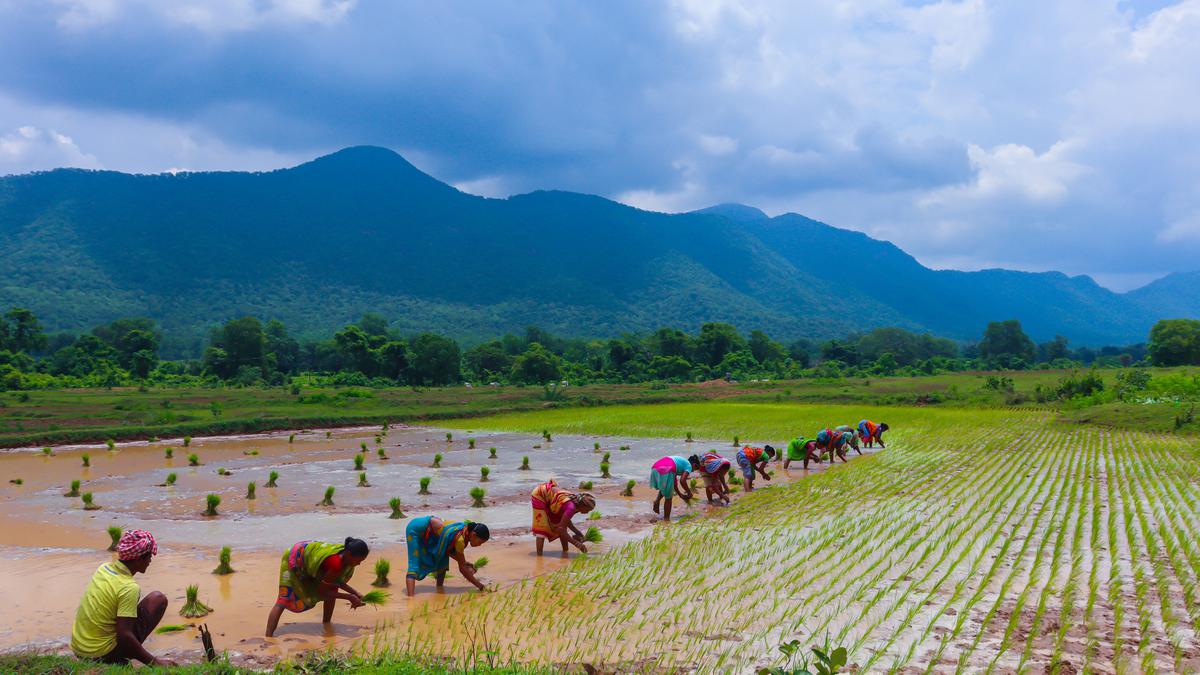
From Western disturbances to El Niño, climate change is affecting India’s food security Premium
The Hindu
Climate phenomena in India this year demonstrate complexity of precipitation system. Western disturbance, El Niño, and Indian Ocean Dipole (IOD) all affect monsoon, green water, and blue water, impacting food and water security. Central India's highlands are climate change hotspots, with water stress, declining monsoon, and increased intensity of rain events. Adaptations and alternative crop strategies can reduce vulnerability to El Niño, but new policies are needed to recharge aquifers and restore ecological flows.
There has been a series of disruptive weather and climate phenomena in India this year, demonstrating the complexity of our precipitation system.
There was the Western disturbance, which usually brings much-needed moisture from European seas to the western Himalaya and parts of northern India in the winter and spring. But this year, the Western disturbance lived up to its name and remained active late into the summer, snapping at the heels of the southwest monsoon.
The widespread destruction of infrastructure and loss of life due to landslides and flooding in the western Himalaya and northern India raised concerns about the sustainability and resilience of our development projects in the mountains and floodplains. Between July 5 and July 20, the affected area was estimated to be between 2,124 and 7,362 sq. km. The population affected was potentially more than 25 lakh.
Climate-linked warming is likely to weaken winter precipitation from the Western disturbance and shift it to more intense rain events. If this happens later into the summer, its consequences will be of great concern.
Soon after this came evidence that an El Niño phase of the quasi-periodic El Niño Southern Oscillation (ENSO) – a phenomenon in the eastern and central tropical Pacific Ocean – was intensifying and likely to affect the southwest monsoon.
Not all El Niño events have adverse effects on the southwest monsoon because the latter is driven by many ocean-atmosphere-land processes. But the relationship between the two entities has been changing over time. When an El Niño affects the southwest monsoon, another ocean-atmosphere phenomenon in the Indian Ocean – called the positive-phase Indian Ocean Dipole (IOD) – could balance the consequences.
Dynamic regression models have suggested that 65% of the inter-annual variability of the southwest monsoon, over many decades, can be attributed to the combined effects of ENSO and the IOD.

“Writing, in general, is a very solitary process,” says Yauvanika Chopra, Associate Director at The New India Foundation (NIF), which, earlier this year, announced the 12th edition of its NIF Book Fellowships for research and scholarship about Indian history after Independence. While authors, in general, are built for it, it can still get very lonely, says Chopra, pointing out that the fellowship’s community support is as valuable as the monetary benefits it offers. “There is a solid community of NIF fellows, trustees, language experts, jury members, all of whom are incredibly competent,” she says. “They really help make authors feel supported from manuscript to publication, so you never feel like you’re struggling through isolation.”

Several principals of government and private schools in Delhi on Tuesday said the Directorate of Education (DoE) circular from a day earlier, directing schools to conduct classes in ‘hybrid’ mode, had caused confusion regarding day-to-day operations as they did not know how many students would return to school from Wednesday and how would teachers instruct in two modes — online and in person — at once. The DoE circular on Monday had also stated that the option to “exercise online mode of education, wherever available, shall vest with the students and their guardians”. Several schoolteachers also expressed confusion regarding the DoE order. A government schoolteacher said he was unsure of how to cope with the resumption of physical classes, given that the order directing government offices to ensure that 50% of the employees work from home is still in place. On Monday, the Commission for Air Quality Management in the National Capital Region and Adjoining Areas (CAQM) had, on the orders of the Supreme Court, directed schools in Delhi-NCR to shift classes to the hybrid mode, following which the DoE had issued the circular. The court had urged the Centre’s pollution watchdog to consider restarting physical classes due to many students missing out on the mid-day meals and lacking the necessary means to attend classes online. The CAQM had, on November 20, asked schools in Delhi-NCR to shift to the online mode of teaching.









